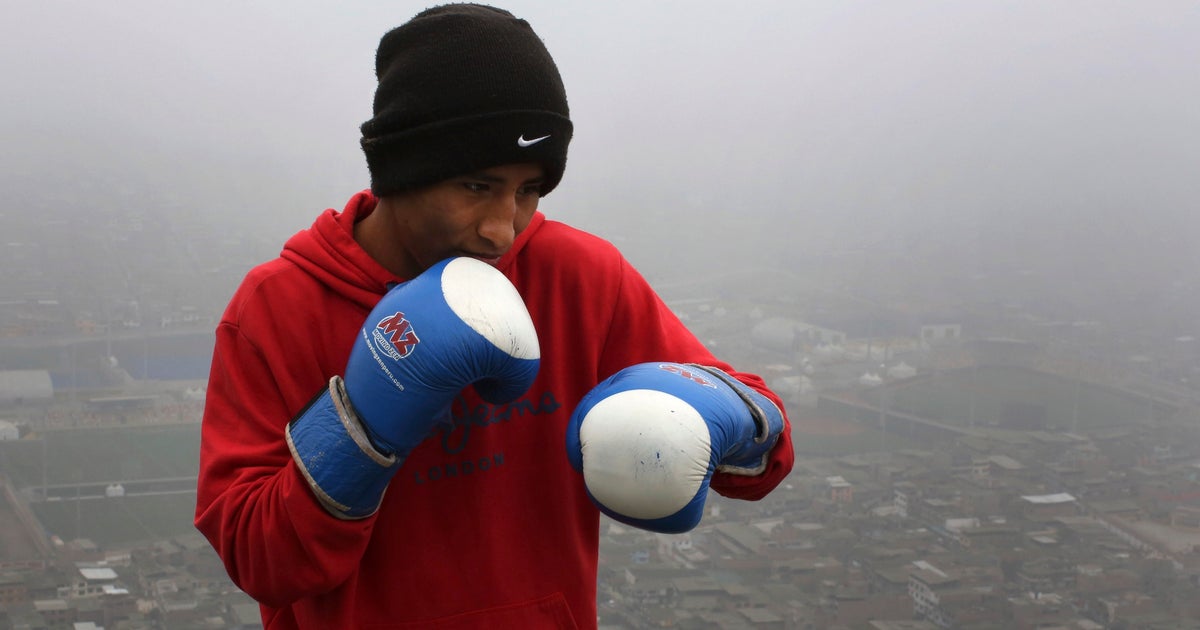Pan American Games spotlight inequality in Peru’s capital


LIMA, Peru (AP) — Amid the thick fog that blankets his sandy hillside shanty town, amateur boxer Marco Morales looks down at a sparkling new complex built by Peru to host the Pan American Games in Lima.
The largest multi-sports event in the Americas starts Friday with the opening ceremony and ends Aug. 11. While many Peruvians are enthusiastic, some have their doubts.
Morales and other residents of shanty town Villa María del Triunfo in Lima have witnessed the construction of the multi-million dollar arena from their cardboard and wooden shacks. That jars with their decades-old and largely unanswered demands to the government for drainage, roads and drinking water in one of the world’s driest capitals.
“No one practices (field) hockey here, even less water polo. Many don’t even know how to swim,” Morales, 19, said about the $400 million investment in the complex down below for sports including field hockey, softball and rugby, which are not popular in the South American country.
In all, Peru spent about $1 billion for what it has branded the biggest sporting event in its history. It also includes a housing complex for nearly 7,000 athletes and the remodeling of several stadiums. Organizers say the project has created world-class infrastructure for the 9 million residents of the sprawling capital located in a desert across from the Pacific Ocean. They say that the money spent is an opportunity to popularize sports that are mostly unknown to Peruvians.
Carlos Neuhaus, the president of the organizing committee, recalled how the residents of Villa María del Triunfo reacted after they watched a women’s rugby game for the first time.
“People would ask: ‘What’s this? Is it fighting soccer? Women fighting?’” he said.
Neuhaus said the local committee received international assistance from experts who have helped to organize other games. The main challenge was fast-tracking delayed infrastructure works in a country that has been shaken by a string of political troubles.
Former Peru President Alejandro Toledo was recently arrested in the U.S. following an extradition request. He is wanted in Peru on accusations of taking bribes from Odebrecht, a Brazilian company at the center of a corruption scandal. In April, former President Alan García mortally wounded himself with a gunshot to his head as officers waited to arrest him in a graft probe linked to the scandal.
Toledo, who has denied wrongdoing, was Peru’s president from 2001 to 2006 and has lived in California in recent years.
Like many other young athletes, Morales had a dream of competing in the Pan Am Games. But he said he failed to qualify because his medical tests showed he had anemia due to his poor diet, a condition that nearly half of all Peruvians under the age of 3 also have. Morales, who gets a meal each day provided by the government, said the complexes built for Lima 2019 should have included sports popular with local residents.
“If they would have asked the people here, they would have suggested soccer, athletics or boxing,” Morales said. “In this area, we box, run and play soccer and volley because you only need a ball in your hands or your feet to play.”
Maintaining and continuing to use sports venues afterward remains one of the top challenges for organizers, said Cristina Dreifuss, investigating coordinator for the school of architecture at Lima University.
“Events like the Olympics and the Pan American Games could be opportunities for many changes,” she said, recalling how the 1992 Olympic Games launched Barcelona as a major tourist attraction. In contrast, Rio de Janeiro still has money-draining arenas three years after it hosted the Olympics. Many venues remain empty, boarded up, and have no tenants or income with the maintenance costs dumped on the federal government.
Some residents of Villa María del Triunfo are upset, saying that only roads where athletes from 41 countries will go through were completed, while the rest remain unpaved. Like most of Peru’s poor, the community gets water from tanker trucks that sell it for several times more than what residents of Lima’s wealthiest neighborhoods pay for tap water.
“The government only cares to show the clean roads where the athletes will pass by. It was the same when Pope Francis visited in 2018,” said Vicente Chávez, a carpenter who has been demanding the installation of water at his home in the hillside slum for a decade.
But the president of the organizing committee is asking for some patience.
“Maybe sport will be the cause that will unite all Peruvians,” Neuhaus said. “Let’s take advantage of this event to stop fighting among us.”









